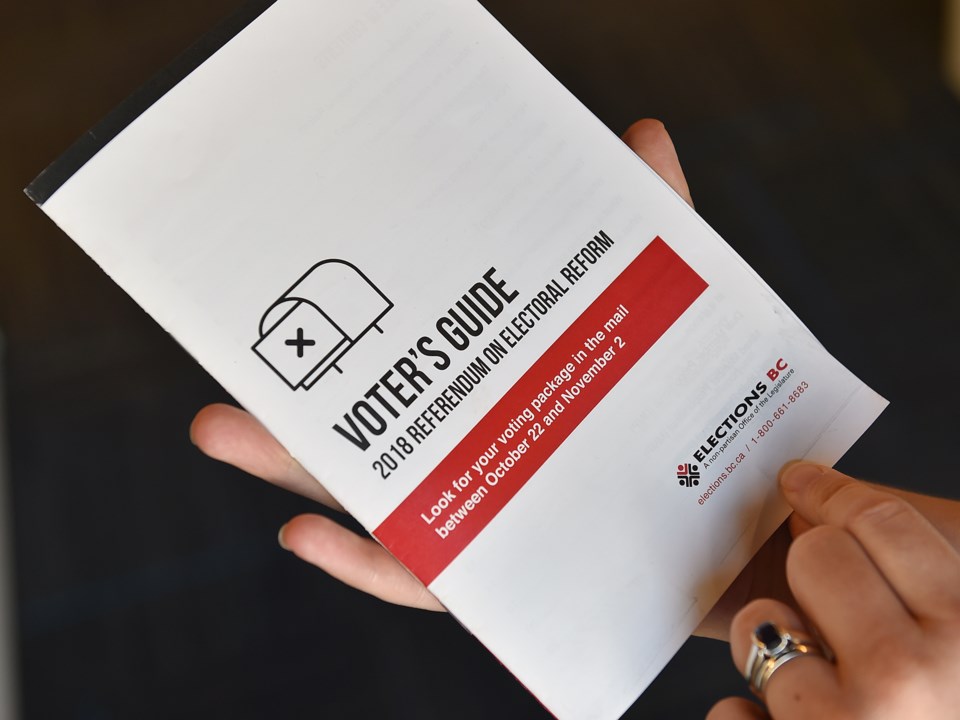British Columbians begin to cast the ballots that could change how we elect our provincial leaders. We’ll either keep our current first-past-the-post (FPTP) system or adopt one of three new models of proportional representation (PR). The B.C. Chamber of Commerce isn’t against PR, per se — but given how unclear the referendum process has been, we urge British Columbians to vote “no.”
The last referendum was held in 2009, with a 61-per-cent majority voting against PR (the same happened in 2005). But despite advice to abandon an ill-conceived process, the province has decided to forge ahead. The good news is that British Columbians have (another) chance to have their voices heard.
I’m always keen to debate how to make government work better for the people who power our province. But the current referendum lacks the fundamental components of democracy: clarity, transparency and legitimacy. The process hasn’t been robust enough to warrant such a critical change to our electoral system, and it’s not being done in a way that best serves the people of the B.C.
A referendum of this magnitude needs to be simple and straightforward, and it should provide the clarity citizens need to make an informed decision about how our province elects its representatives. Unfortunately, the current electoral reform question does anything but.
After deciding to keep the FPTP model or switch to the vague category of PR, voters must then rank three new PR models: Dual Member, Mixed Member and Urban-Rural. Instead of being empowered to make an easily understandable choice between FPTP and a single, well-defined PR model, voters have basically been handed a ballot written in code.
The multi-step voting process is needlessly complex and does not provide an apples-to-apples choice of which voting method is best for the province. The three PR options in question are incredibly complex and require deep understanding to make an informed decision. There hasn’t been adequate education for the electorate on how each model works and what each outcome would mean for British Columbians.
All of this stems from a serious lack of transparency around what’s being decided here. The current vote has the appearance of a single referendum but, because of the multi-step question, it’s actually a two-in-one deal. There are two major changes on the table: the first between our current system and the broader theory of PR, and the second between three possible models.
Did I mention two of these methods have never been tested anywhere in the world? No wonder citizens and the business community are having trouble engaging with the issue, despite its importance and potential wide-reaching effects.
Even during the lead-up to the voting period, there was a concerning lack of engagement with the broader public. The 2005 referendum saw the creation of a Citizens’ Assembly which, over a few years, worked together with the public, experts, and indigenous communities to develop a single, straightforward choice for the ballot question. The current referendum saw no such process.
This vote is at a clear disadvantage to other votes on electoral reform. The 2005 and 2009 referenda required 60% voter approval overall and a simple majority approval in 60 per cent of the electoral ridings. The current referendum drastically diverges from this standard, requiring just a “50 per cent + 1” majority for success. That’s setting the bar too low.
The change was made to ensure broad public support for the results and to provide legitimacy to the new system. But lowering the threshold and removing the need for a majority of electoral ridings isn’t in British Columbians’ best interests. It risks the creation of a new electoral system that only a slim majority of the electorate supports — and one that does not have support from the diverse corners of our province.
The mail-in ballot procedure makes the low threshold even more worrisome. During the BC Indigenous treaty referendum in 2002, only 35.8 per cent of ballots were returned. The 2015 Metro Vancouver Transportation and Transit referendum saw only 48.6 per cent. In theory, if these voter turnouts are replicated this time around, a mere 18 per cent to 24 per cent of the electorate could dictate a change in voting systems. But remember, this is a two-step ballot — so the number of votes that would potentially choose the new system would be even smaller.
The division of the votes may further undermine the legitimacy of the final results, especially in rural and interior communities where people are concerned their voices will be silenced by larger, urban populations. The referendum has created the illusion that every person’s vote counts — but perhaps this is only true if you live in the province’s hot spots.
When it comes down to it, the merits and pitfalls of our electoral system are always open for discussion, but B.C.’s strong and stable democratic institutions undoubtedly give our province a competitive edge. Changing the current model will have long-term implications in every corner of B.C. It’s only fair that the decision is one voters can fully understand and that the process is one they can trust. We urge you to vote “no.”
Val Litwin is CEO of the B.C. Chamber of Commerce.



